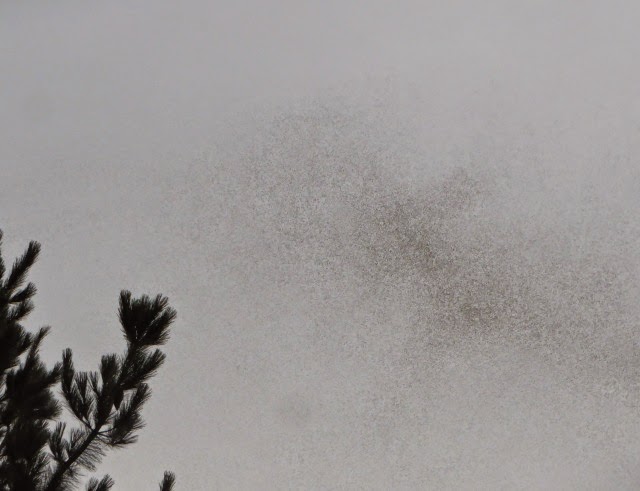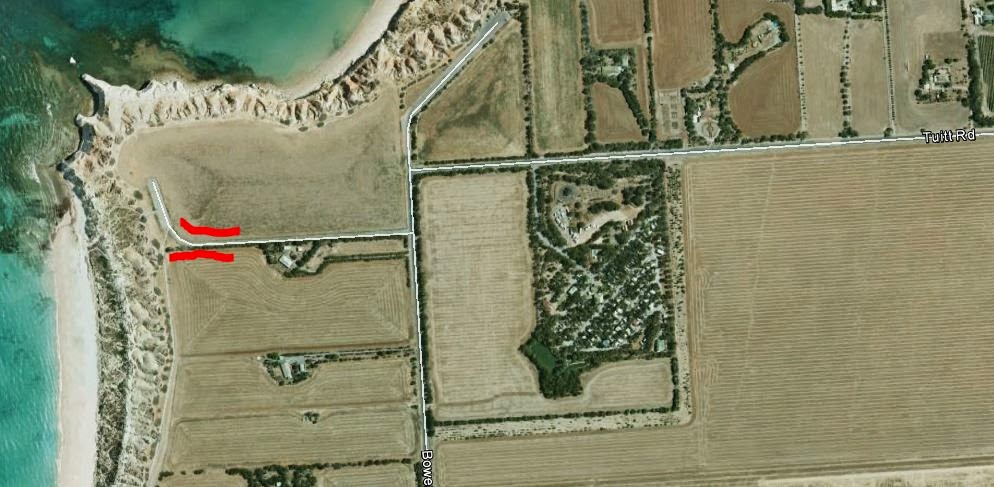Annual Weather Report 2016
This will be a trial venture as I haven't done an Annual Report on the weather in the past, so trying to work out a balance between numbers, charts and text will be tricky. However here we go.
Before getting into any details I offer a word about seasons, which I refer to in various spots below. For the reasons explained in this post I define the seasons for Carwoola as follows:
There isn't a significant trend in this.
In terms of seasons, Summer 2015-16 had well below average rainfall while the 3 other three seasons were above average with Autumn and Spring significantly so. Spring rainfall (183mm) was the second highest recorded and close to the maximum (191mm) which occurred in 2010.
Drilling down to the months, June and September had the highest falls recorded in the area. No wonder the grass and weeds are growing so well. In contrast February, March and April form a string of below average falls,
Looking at the records of the nmber of days on which rain was recorded 2016 has set a new high mark (a high-water mark?) of 109. Of these 57 days were above 5mm: that is a rule of thmb as to when the rain will get below the soil surface.
Before getting into any details I offer a word about seasons, which I refer to in various spots below. For the reasons explained in this post I define the seasons for Carwoola as follows:
- Summer is November to February
- Autumn is March to June
- Winter is July and August
- Spring is September and October
Overall Summary
A rather wet year.
In terms of maximum temperatures it was slightly below average. This was mainly due to a very cool Spring: other seasons were close to average.
At the other end of the spectrum the average minimum temperature was close to the highest ever recorded. Autumn was particularly uncool.
Rainfall
In total I recorded 828 mm of rain during the year. This is the 6th highest recorded (by various people using various forms of technology) since 1985. It is no surprise to find that the damper years were towards the ends of the series with a dry period (aka drought) in the middle.There isn't a significant trend in this.
In terms of seasons, Summer 2015-16 had well below average rainfall while the 3 other three seasons were above average with Autumn and Spring significantly so. Spring rainfall (183mm) was the second highest recorded and close to the maximum (191mm) which occurred in 2010.
Drilling down to the months, June and September had the highest falls recorded in the area. No wonder the grass and weeds are growing so well. In contrast February, March and April form a string of below average falls,
Looking at the records of the nmber of days on which rain was recorded 2016 has set a new high mark (a high-water mark?) of 109. Of these 57 days were above 5mm: that is a rule of thmb as to when the rain will get below the soil surface.
Temperatures
There seems to be some sense in covering measures of hot weather and cold weather as separate sections so I have made it so.
Warmth
The average of monthly maximum temperatures for the year was 20.3oC. This is slightly below the average of such values since 1993.
With an r2 of 0.67 the trend is a reasonable fit to the data. However, before Senator Malcolm Roberts and other deniers seize on the downward slope of the past few years, to make any serious statements about climate change one needs centuries of data (or preferably millenia). As a total aside the word "denier" can be pronounced in two ways: one means 'someone who denies something' while the other is ' a measure of thickness'. Your call which to use in reference to the Senator, but I shall be calling him the Nylon Senator from now on.
On a seasonal basis Summer, Autumn and Winter were all quite close to the 23 year average. However the value for Spring (15.8oC was only 0.1oC above the coldest Spring recorded (1995). This is emphasised in monthly data with October being the lowest average maximum recorded for the month, while September was the third lowest. January was also relatively cool while the other months were a little above or below average.
I have also developed some thought about heat wave days as a measure of unpleasant heat. It is a tad awkward to think about as the hot period spans two years. So the values for a calendar year contain the end of one hot period (January - April) and the start of the next (October - December). A graph of the resulting values follows, for what it is worth.
These data are too variable for a significant trend to be detected but there is clearly no evidence of a downward trend in this chart.
The trend line here is a pretty good fit to the data, but as noted above at 23 years the series isn't really long enough to make any huge statements (even though it tends to support my position).
Autumn was particularly warm with 3 of the 4 months being >2oC above the monthly average minimum. Other seasons were closer to the average. Overall 6 months were >2oC above the monthly average minimum 4 were between 0 and 2oC above the monthly average minimum and 2 months (October and November) were slightly below the average.
My second measure of coldness is the number of frosts recorded. I have calculated separate values for days with a minimum less than 2oC (ground frosts - 86 in 2016 ) and those with minima below zero (air frosts - 54 in 2016).
Both series show lower values (ie less frosts = warmer) towards the end of the series and the trend line for ground frosts has a pretty good fit to the data.
As I define, in part, the seasons on the basis of low temperatures it would be self-fulfilling to compile data according to seasons. In terms of months, for 2016 both June and July had close to 7 less ground-frost days than average, while September had 13 less ground-frost days. To a fair extent this relates to the months with much rain (and thus insulating cloud cover). Other months were slightly below average (ie slightly less frosts).
These data are too variable for a significant trend to be detected but there is clearly no evidence of a downward trend in this chart.
Coldness
The average of monthly minimum temperatures for 2016 was 6.4oC. This is the second highest value recorded.The trend line here is a pretty good fit to the data, but as noted above at 23 years the series isn't really long enough to make any huge statements (even though it tends to support my position).
Autumn was particularly warm with 3 of the 4 months being >2oC above the monthly average minimum. Other seasons were closer to the average. Overall 6 months were >2oC above the monthly average minimum 4 were between 0 and 2oC above the monthly average minimum and 2 months (October and November) were slightly below the average.
My second measure of coldness is the number of frosts recorded. I have calculated separate values for days with a minimum less than 2oC (ground frosts - 86 in 2016 ) and those with minima below zero (air frosts - 54 in 2016).
Both series show lower values (ie less frosts = warmer) towards the end of the series and the trend line for ground frosts has a pretty good fit to the data.
As I define, in part, the seasons on the basis of low temperatures it would be self-fulfilling to compile data according to seasons. In terms of months, for 2016 both June and July had close to 7 less ground-frost days than average, while September had 13 less ground-frost days. To a fair extent this relates to the months with much rain (and thus insulating cloud cover). Other months were slightly below average (ie slightly less frosts).
Humidity.
The previous sections have included data compiled by Lynton Bond and others in collecting material to go in the Stoney Creek Gazette. What follows is restricted to the period since I acquired a weather station (and has a couple of gaps since then when things didn't work for various reasons, which I have filled with estimates). This now covers 4 years which isn't really enough to do much with.
Overall the rH at 1500 Hrs in 2016 averaged out to 52.7% which compares with 52.0% average over the 4 years. This is a slightly surprising result given the amount and frequency of rain over 2016: I had expected a higher value for 2016. Possibly this is an effect of the slightly warmer temperatures (slightly lower maxima but higher minima)?
The monthly situation is illustrated here:
I can't find much more to say than no outstanding differences to normal.









Comments